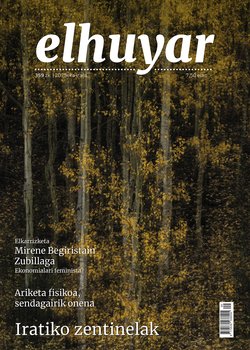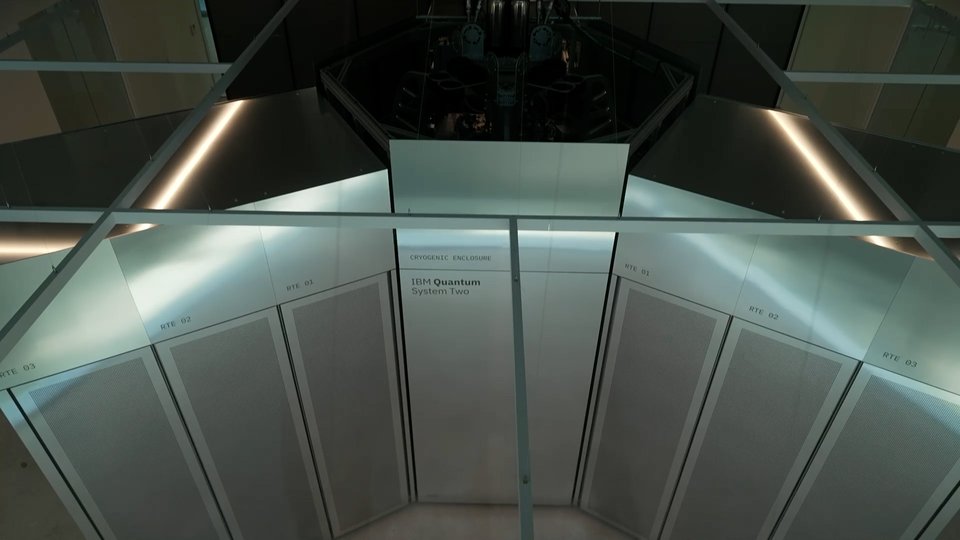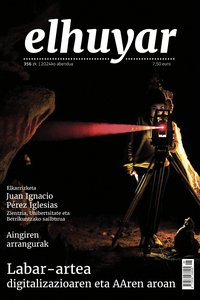Mountain clothing with Alberto Iñurrategi
NAGORE REMENTERIA; Elhuyar Foundation: Hello there, Alberto!
ALBERTO IÑURRATEGI; mountaineer:Oh, hey, Nagore!
NAGORE REMENTERIA; Elhuyar Foundation: How's it going? In the restrooms?
ALBERTO IÑURRATEGI; mountaineer:Taking a little breath.
NAGORE REMENTERIA; Elhuyar Foundation:The clothes to go up to the Ayuntamiento will not be the same as the clothes to go up to an octave in the Himalaya, right?
ALBERTO IÑURRATEGI; mountaineer: No, it's not the same. When we go to Himalaya we look a lot at the weight and also the technical characteristics of the garments. Anything to come to town hall is more or less worth it; at least we don’t look at the floor. But in the Himalayas we walk in the right, given everything, and there, yes, even the smallest detail matters.
NAGORE REMENTERIA; Elhuyar Foundation:Do you wear clothes made especially for you?
ALBERTO IÑURRATEGI; mountaineer: Yes, I have that luck. In Ternua I am considered a household and every time they make me special garments, tailor-made and the way I ask them. And that is a luxury! If you want, I'll show you how they make me pants.
NAGORE REMENTERIA; Elhuyar Foundation: All right, all right. Come on, let's go!
ALBERTO IÑURRATEGI; mountaineer: They make prototypes here. All our clothes come out of here.
NAGORE REMENTERIA; Elhuyar Foundation:What is this?
ALBERTO IÑURRATEGI; mountaineer: this is Gore-Tex, that fabric so popular.
NAGORE REMENTERIA; Elhuyar Foundation: The goretex was a revolution, wasn't it?
ALBERTO IÑURRATEGI; mountaineer: Everyone has a dress like this. It is a waterproof membrane used for water. It has had its own development and has nothing to do with the goretex we met ten years ago. They were like cardboard. This one's softer.
This one's Power Strecht. This is used as the second layer. I remember that I was going to use this for the first time in 2004 or so, and one of the most interesting developments in recent years has been this material. It's very tasty.
NAGORE REMENTERIA; Elhuyar Foundation:That's it, sweet texture.
ALBERTO IÑURRATEGI; mountaineer:This is a very useful garment for both the mountain and the street.
This other is a very technical polar suit called Regulator. The use of this is actually more limited. It is very warm, but the wind blows through it, so for the days of the wind he asks for something else to keep the wind.
NAGORE REMENTERIA; Elhuyar Foundation:Something more closed, yes.
ALBERTO IÑURRATEGI; mountaineer: This is Primaloft, a fiber that has become very popular lately. It is used as a replacement for the pen; and it is certainly giving very nice results. This doesn't get wet. One of the characteristics of this is precisely this: it doesn’t get wet with water, like a pen or a polar suit. And it is a very nice material to get the heat.
NAGORE REMENTERIA; Elhuyar Foundation: It's very light. Is it as light as a pen?
ALBERTO IÑURRATEGI; mountaineer:No, it's a little lighter.
NAGORE REMENTERIA; Elhuyar Foundation:It's very light, though.
ALBERTO IÑURRATEGI; mountaineer:It's light though, yeah.
NAGORE REMENTERIA; Elhuyar Foundation: What is this diver, Alberto?
ALBERTO IÑURRATEGI; mountaineer: It’s been a few years now! it is a suit used in the Gasherbrum III in 2004. The filler contained therein is fibrous. And the truth is that at the time, this garment fulfilled its mission.
NAGORE REMENTERIA; Elhuyar Foundation: This time, it's a feather, right? This other blue is the one you use.
ALBERTO IÑURRATEGI; mountaineer:We look at the floor a lot.
NAGORE REMENTERIA; Elhuyar Foundation: If it's okay with you, we'll undress you. Well, we'll undress you. You're not in there, but since it's your clothes... To see what you've got inside.
Do you wear many layers?
ALBERTO IÑURRATEGI; mountaineer: I usually wear two layers on my feet: I'm wearing a Power Stretch and a diver's pants. And, at the top, we usually wear four layers, although in most cases we use three. Inside we wear Power Dry or merino wool; in the form of a second layer of Power Stretch, this is usually very hot. We wear another layer for very critical moments: to sleep at night or for the first hours of the morning. And directly, the diver, the feather diver or the fiber diver.
It’s good to be able to remove something before you sweat. That is why, in this case, this diver is made in two pieces. And it allows us to remove both the jacket and the trousers.
NAGORE REMENTERIA; Elhuyar Foundation: And to be used independently.
How many degrees are you in to need all these clothes? Do you measure it?
ALBERTO IÑURRATEGI; mountaineer: Not really, no. We can have twenty degrees below zero there in the coldest moments. However, in these cases it is more than cold that when we adjust to the height we develop red blood cells in the body to a large extent, we reach 60-65 million red blood cells, and the blood strengthens us. As a result, the blood circulation slows down, and we experience a greater sense of cold. That’s why this consistency of blood tends to be a bigger problem than the cold in the octaves.
NAGORE REMENTERIA; Elhuyar Foundation:Is that why the fingertips are easier to cool?
ALBERTO IÑURRATEGI; mountaineer: Twenty degrees below zero this outfit would be too much. In the Alps, for example... Twenty degrees are below zero in the Alps, but we wouldn't wear so many clothes.
NAGORE REMENTERIA; Elhuyar Foundation:Thank you, Alberto, for showing me all this.
ALBERTO IÑURRATEGI; mountaineer:Encourage you too!
Buletina
Bidali zure helbide elektronikoa eta jaso asteroko buletina zure sarrera-ontzian










